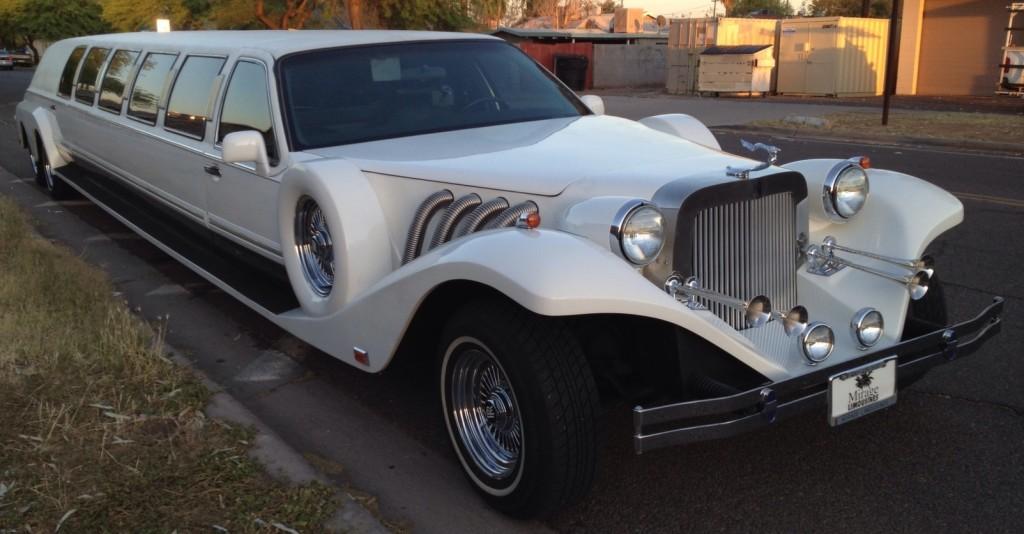Call Us Today To Book Your Transportation
A limousine (or limo) is an unusually long luxury car, traditionally black or white in color (other colors, however, have also been used for limousines, like pink, magenta, or blue). Limousines are most commonly driven by chauffeurs and are often associated with the wealthy.
That is, in the past limousine service was associated with the wealthy. Nowadays limousine service and party bus rental has become available to everyone. Often people travel in groups to events. Have you ever gone to a concert with your friends? How many? When attending an event with a group of friends, splitting the cost of a limo or party bus suddenly makes luxury transportation accessible.

While some limousines are owned by individuals, many are owned by governments to transport senior politicians, by large companies to transport executives, or by broadcasters to transport guests. Most limousines, however, operate as livery vehicles, providing upmarket competition to taxicabs. A livery vehicle is a vehicle for hire. It is a term used in Great Britain. In America there isn’t an equivalent term, so we use it here.
The word limousine is apparently derived from the name of the French region Limousin. Perhaps it is associated with the long cloaks once worn by the shepherds there. The first limousines had a compartment that some likened to a shepherd’s hood, they say. Or maybe because the driver wore a hood. Or maybe the origin of the word is shrouded in mystery like a hooded figure.
One Limousin enthusiast wrote:
The origin of the “Limousine car” comes from a type of horse-drawn vehicle used in the French Limousin Region. However, it could also come from a vast cloak- the Limousine- that the inhabitants of the Limousin used to protect themselves from rain. It gave its name to the first car named “limousine” where only the rear seats were protected by a hood.
Another hypothesis: the name could be given by Charles Jeantaud, born in Limoges (1843-1906), inventor of this type of bodywork…

A limousine typically has a partition between the driver compartment and the rear passenger compartment. This partition usually contains a sliding (sometimes even soundproof) glass window so that conversations between passengers in the rear compartment may be kept private from the chauffeur. However, limo drivers have discretion when using this partition. For example, when your precious little dumplings are back there, i.e. minors, the driver will probably not deploy the partition. Just to keep an eye on the little darlings.
Traditionally, the limousine has been an extension of a large sedan. A longer frame and wheelbase allow the rear passenger compartment to contain the usual forward facing passenger seat but with a substantial amount of footroom — more than is actually needed. Usually then two “jump seats” are mounted, facing rearward behind the driver. These seats fold up when not in use. In this way, up to five persons can be carried in the aft compartment in comfort, and up to two additional persons carried in the driver’s compartment, for a total capacity of seven passengers in addition to the driver. This type of seat configuration has however become less popular in recent limousines.
Newer limousines such as the Maybach 62, Audi A8L, Mercedes-Benz S-Class, Hummer H2, Leland Miracle, BMW 760li, Lincoln Town Car, L Edition and the Cadillac DTS do not feature such seats since stretch limousines are usually used to transport more than three passengers, excluding the driver. In production American limousines however, the jump seats almost always faced forward. The last production limousine, by Cadillac, with forward facing jump seats was in 1987, the last Packard in 1954, and the last Lincoln in 1939, though Lincoln has offered limos through their dealers as special order vehicles from time to time. Vehicles of this type in private use may contain expensive audio players, televisions, video players, and bars, often with refrigerators.
It is simpler and more straightforward to determine the effects of altering a separate chassis than it is to determine the effects of altering a load-bearing unit body. For this reason, the automobile of choice for conversion into stretch limousines is currently the Lincoln Town Car, whose Panther platform is one of the last remaining automotive platforms using a separate load-bearing chassis. However, coach builders have recently built many new models based on SUV’s with separate load-bearing chassis, including Hummer H2s and H3s.
Coach builders can perform aftermarket extensions on luxury sedans and SUVs. These extensive limousine conversions have been performed on several luxury marques, including: Audi, Bentley, BMW, Cadillac, Chrysler, Ford, Holden, Hummer, Infiniti, Jaguar, Lexus, Lincoln, Mercedes-Benz, Rolls-Royce and Volkswagen. In the United States the most popular vehicles for stretch limousines conversion are the Lincoln Town Car, Cadillac DTS, Hummer H2, and the Lincoln Navigator. There are even instances of Corvettes and VW Bugs being stretched to accommodate up to 10 passengers.
Oldest & Largest Limo Service and Party Bus Rental in Arizona (480) 970-7700 Call anytime, 24 hours per day, seven days per week.
813 N Scottsdale Rd Scottsdale, AZ 85257
Mon-Fri 10am-5pm
Sat 9am-6pm
(480) 970-7700